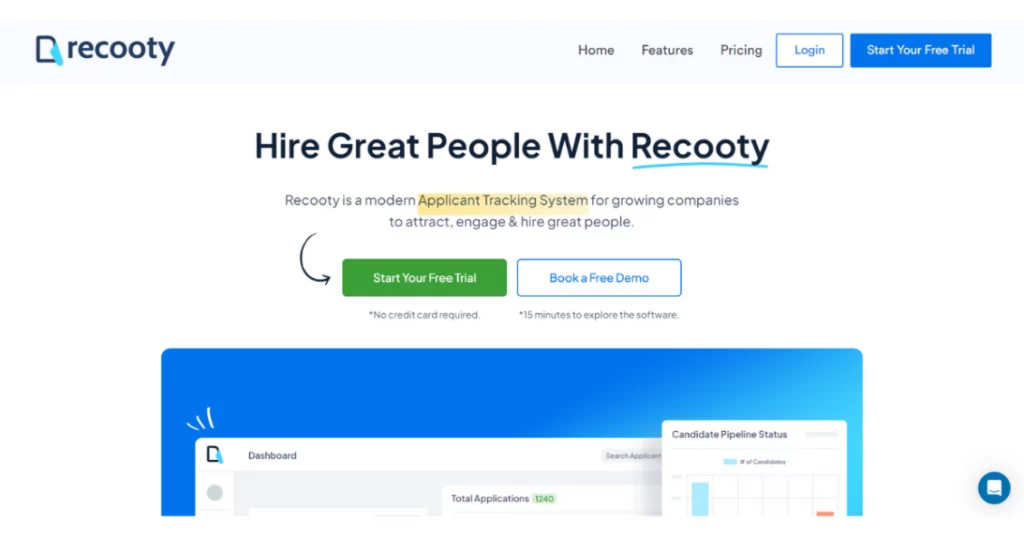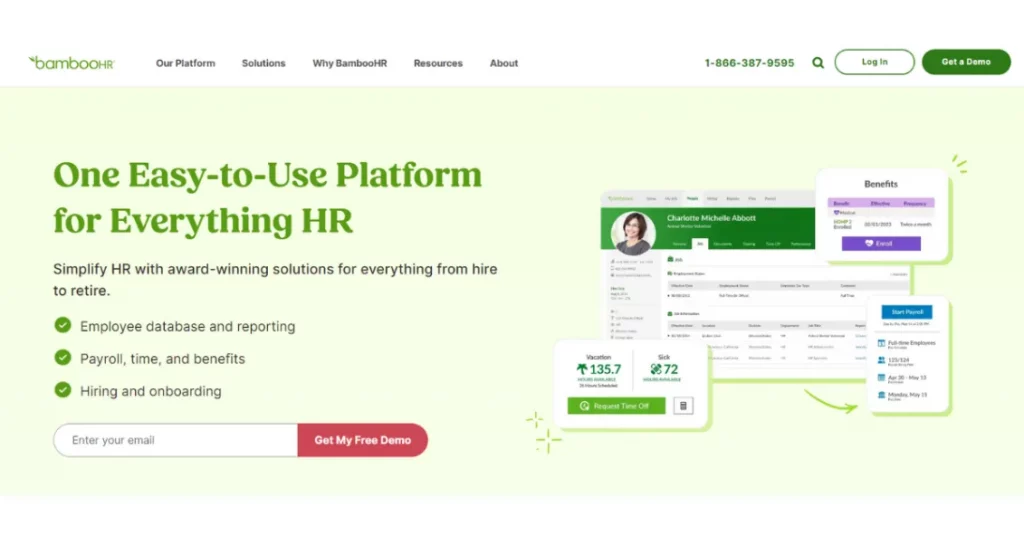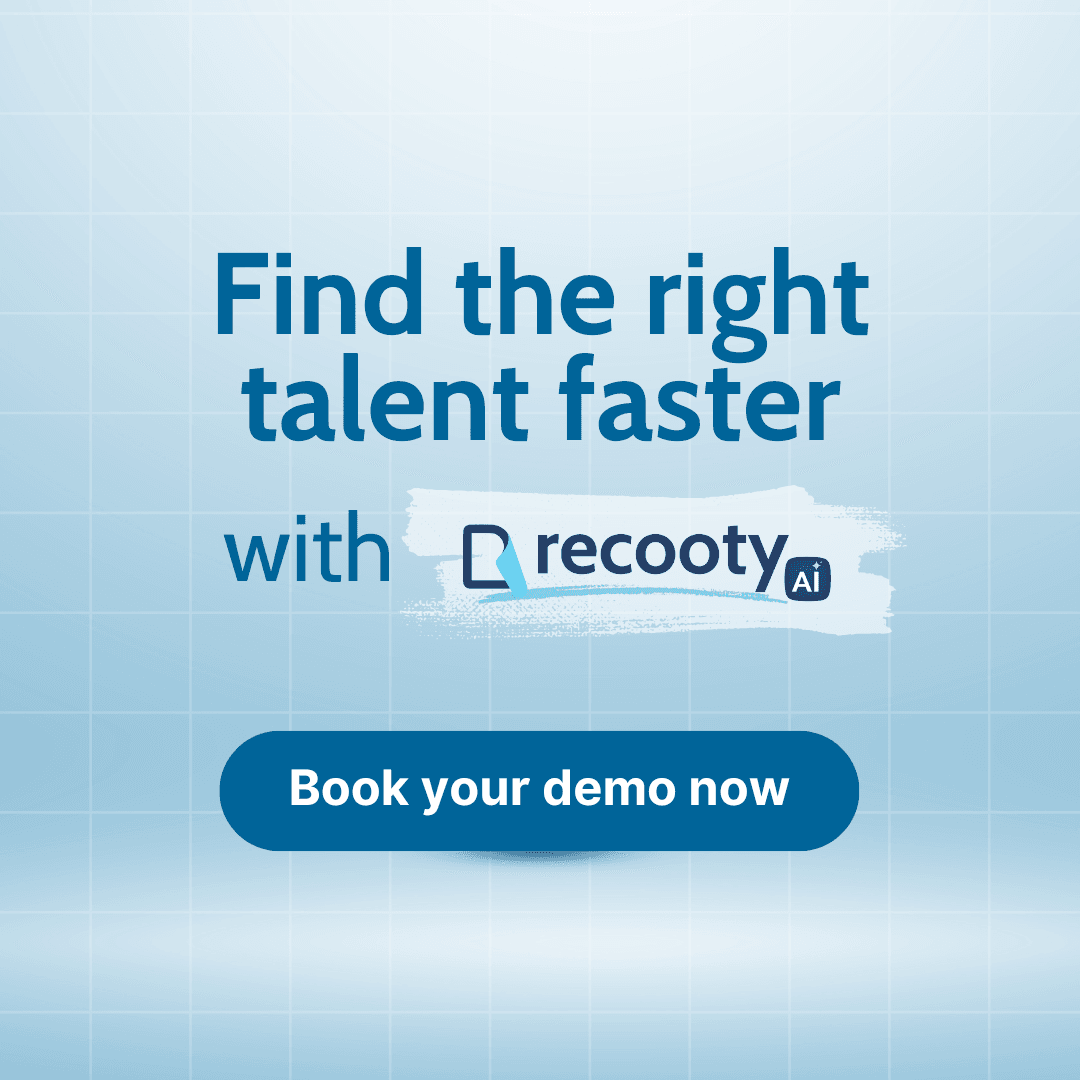
As AI became mainstream, ATS companies started integrating it into the systems to optimize hiring like never before. This paved the way for normal ATSs to become AI applicant tracking systems. From automating recognizing skills and qualifications to predicting a candidate’s success, AI ATS solutions are assisting the recruiting teams, every step of the way.
For candidates, it means a smoother experience in their overall journey. With AI integration into applicant tracking systems, companies have started to automate repetitive tasks and began extensive analysis of candidate data.
According to the latest stats by SHRM, 25% of companies are preparing to implement an AI ATS by 2027. You might be thinking about how it affects your hiring process and what benefits it brings to the same.
In this article, you will find how is AI being used in ATS, what advancements will you notice, and what are the potential disadvantages of adopting an AI ATS into your business. Plus, we have included the top ATS options that offer AI functionalities as well.
So without any delays, let’s dive in!
How is AI used in Applicant Tracking Systems (ATSs)?
AI is changing the way Applicant Tracking Systems (ATSs) operate by embedding smart algorithms and automation into the recruitment process. From sifting through vast numbers of resumes to delivering actionable insights, AI improves the efficiency, accuracy, and fairness of hiring practices.
Let’s now explore how AI is leveraged in ATS platforms:
1. Resume Screening and Parsing:
AI in ATS solutions is primarily used to automate the screening and parsing of resumes. Traditionally, recruiters had to manually sift through hundreds or even thousands of resumes, a process that was both time-consuming and prone to error.
With AI, machine learning algorithms are trained on large datasets of resumes to understand the structure and identify key elements such as skills, education, and work experience. These algorithms can handle various resume formats and extract relevant information then convert it into a standardized format that the ATS can easily process.
The AI then ranks candidates based on predefined criteria, such as specific skills or years of experience. As the AI system is exposed to more data over time, it refines its ability to screen resumes more accurately, reducing the likelihood of overlooking qualified candidates.
2. Candidate Matching:
Candidate Matching is a relatively new feature that came into existence when AI was introduced in ATS platforms. AI-driven candidate matching in ATSs does a lot more than basic keyword searches. Instead of looking for matches between job description keywords and resume content, AI understands the context and relevance of a candidate’s experience and skills.
For example, if a job description requires experience in “project management,” the AI doesn’t just look for the phrase “project management” in a resume. It also considers related terms, past roles, and the industry context in which the experience was gained.
Additionally, AI can analyze past hires to predict which candidates are likely to succeed in a specific role or company culture. This allows AI to match candidates based on their potential fit, not just their experience.
3. Predictive Analytics for Hiring Decisions:
AI is increasingly being used in ATSs to provide predictive analytics to offer you data-driven insights into candidate selection. Predictive analytics involves analyzing historical data such as previous hiring decisions and the subsequent performance of those hires to forecast future outcomes.
For example, an ATS might use AI to analyze patterns in the backgrounds of employees who performed well in a particular role, then apply those patterns to new candidates to predict who is most likely to excel. This could include factors such as education, prior job performance, or even soft skills that are often difficult to quantify.
Using AI to predict candidate success helps organizations make smarter hiring decisions, reducing turnover and improving job fit. This makes the hiring process more strategic and aligned with business goals.
4. Candidate Engagement
To nurture your talent pipeline and sustain an impressive talent pool AI can help a lot. An AI ATS can automate candidate interactions, scheduling interviews, and more. For example, you may find an AI chatbot that can communicate with candidates using natural language processing. AI Chatbots can quickly handle tasks like:
- Answering basic queries about the role
- Notifying candidates about their application status
- Delivering information like culture, values, and benefits
This ensures a pleasing experience for candidates and can improve engagement with them.
5. Bias Reduction:
AI in ATSs plays a critical role in promoting diversity and inclusion by mitigating possible biases in the hiring process. Bias can occur at various stages, from resume screening to final interviews, mostly due to unconscious human prejudices.
Integrated AI tools address this by making resumes anonymous. This means AI hides details such as name, gender, or even the name of educational institutions to ensure that they are evaluated solely on their qualifications and experience.
Furthermore, AI can be trained to detect and flag potentially biased language in job descriptions or evaluations. For example, certain adjectives or phrases might unconsciously favor one gender over another. The AI can suggest more neutral alternatives, thus broadening the appeal of job postings to a more diverse range of candidates.
Benefits of Using AI in Applicant Tracking Systems (ATS):
Using AI in Applicant Tracking Systems (ATSs) offers you a range of advantages to streamline recruitment processes and improve outcomes. Let’s have a look at the top ones:
1. Efficiency and Time Savings:
AI reduces the time spent on repetitive tasks with its automation capabilities. These include tasks like resume screening, candidate matching, and interview scheduling. With this, you can focus on more strategic activities such as engaging with top candidates and making informed hiring decisions.
For example, an AI-powered ATS can screen thousands of resumes in minutes, a task that would take a human recruiter hours or even days.
2. Improved Candidate Quality:
AI enhances the accuracy of candidate matching by analyzing vast amounts of data to identify the best-fit candidates. This results in a higher quality shortlist, as AI considers factors such as skills, experience, and even cultural fit.
With AI’s ability to analyze patterns and predict success, recruiters are more likely to find candidates who not only meet the job requirements but also excel in the role.
3. Enhanced Candidate Experience:
AI-powered tools such as chatbots and automated communication systems ensure that candidates receive timely updates and responses throughout the hiring process. This consistent engagement helps maintain a positive candidate experience which is crucial in a competitive job market.
For example, AI can send personalized follow-up emails, provide instant feedback, and schedule interviews, all of which contribute to a smoother and more efficient candidate journey.
4. Enabling Data-Driven Decisions:
AI provides you with valuable insights and analytics on various aspects of the recruitment process, such as source effectiveness, candidate quality, and time-to-fill metrics.
By analyzing this data, you can make more informed decisions and continuously improve your hiring strategies. For instance, AI can identify which recruitment channels yield the best candidates. This allows recruiters to optimize their sourcing efforts and allocate resources more effectively.
Potential Disadvantages of Using AI in ATS:
Yes, the use of AI in applicant tracking systems has a lot of benefits, however, we can’t overlook its potential drawbacks. Let’s now discuss the most pressing ones:
1. Dependence on Data Quality:
AI systems rely heavily on the quality of input data. Poorly structured, incomplete, or insufficient data can lead to inaccurate results such as mismatches between candidates and job requirements. This can hinder the effectiveness of the ATS and lead to hiring decisions that are not ideal.
2. Risk of Bias in Algorithms:
Although AI aims to reduce bias, it can accidentally reinforce existing biases if the data used to train the algorithms reflects historical biases. A report by Harvard Business School & Accenture revealed that automated systems usually disqualified candidates with work gaps or with no college degree, even when they had great potential.
3. Lack of Human Judgment:
AI lacks the nuanced understanding of human behavior and context that experienced recruiters bring to the hiring process. This can result in overlooking valuable but difficult-to-quantify attributes such as cultural fit or soft skills, crucial for making the best hiring decisions.
4. Data Privacy Concerns:
Using AI in ATSs involves collecting and analyzing large amounts of candidate data, raising concerns about data privacy and security. Mishandling or breaches of sensitive information can have legal implications and damage a company’s reputation.
Top Applicant Tracking Systems (ATS) that use AI:
Though there are now tons of options available in the ATS market space, here are the top 3 AI ATS you can consider:
1. Recooty:

Recooty is an AI-powered ATS that uses intelligent AI algorithms to automate redundant tasks. This includes creating job postings, screening and identifying potential fits, providing profile overviews, and a lot more. All these features come packaged with one centralized and intuitive platform. Recooty can make hiring 50% faster and cut down 80% of time spent on repetitive tasks with AI automation.
Recooty AI ATS Pricing:
Recooty’s yearly pricing starts at $99/month (USD). For more information about which plans Recooty offers and what features they entail, visit the pricing page.
2. Bamboo HR:

BambooHR offers a diverse set of AI-enabled tools like candidate scoring, interview scheduling, and AI chatbots. Apart from that, it has a complete set of tools you can expect from a hiring solution. The company claims up to 25% reduction of time spent on hiring.
Bamboo HR AI ATS Pricing:
Though Bamboo HR has shown its plans namely Essentials & Advantage with features on its pricing page, it hasn’t revealed pricing for the same. You need to contact their sales team to get a quote.
3. SmartRecruiters:

Just like the above solutions, Smartrecruiter’s AI automation handles resume screening, talent matching, and interview scheduling. As per the company, it has lowered the time-to-hire by up to 50% on average for its customers.
SmartRecruiters AI ATS Pricing:
SmartRecruiter hasn’t disclosed its pricing to the public. You need to get in touch with their sales team to get the pricing info.
Frequently asked questions
AI in an Applicant Tracking System (ATS) refers to the use of artificial intelligence technology to automate and improve recruitment tasks like resume screening, candidate matching, and communication. Implementing AI in ATS helps recruiters improve efficiency, candidate quality, and decision-making in the hiring process.
AI is used in ATS for:
- Resume Screening: Automatically filtering resumes based on keywords and qualifications.
- Candidate Matching: Comparing job descriptions with resumes to identify the best fits.
- Interview Scheduling: Automating the process of setting up interviews.
- Communication: Using chatbots to handle candidate queries and provide updates.
AI in ATS improves recruitment by saving time, improving the quality of candidates, reducing bias, and improving candidate experience while also providing data-driven insights. These benefits lead to more efficient, fair, and effective hiring processes.
AI in ATS integrates with features like candidate screening, resume parsing, job matching, interview scheduling, and communication tools to streamline recruitment and enhance candidate experience.
Before opting for an AI ATS, consider its ability to integrate with existing systems, the accuracy of its resume screening and candidate matching, data security, ease of use, and the quality of its communication features.





